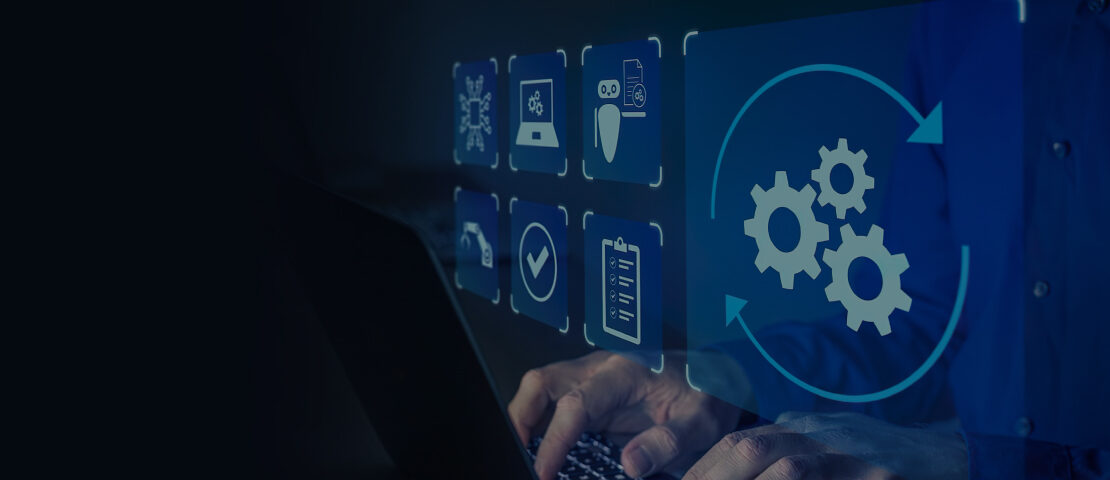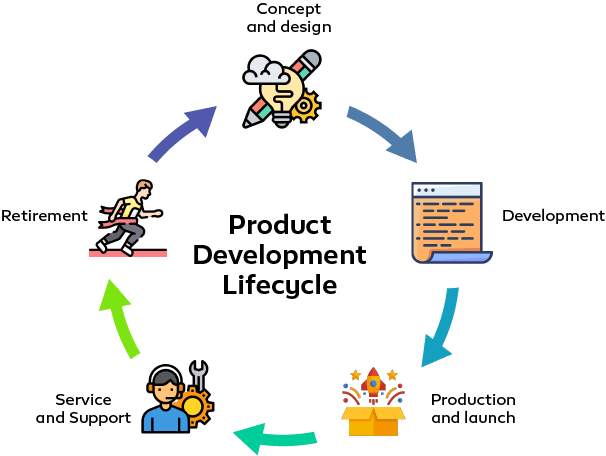- June 14, 2023
- Posted by: Indium
- Category: Application Engineering

Let’s start with the basics. What exactly is the product development lifecycle?

Gartner defines the product development lifecycle as the end-to-end process of designing, developing, testing, and launching a new product or service. For the effective transformation and maintenance of any idea in a product development lifecycle, it’s critical to follow a systematic approach to prioritizing investments in product and customer experience. You also need to integrate insights and best practices to maximize product management efforts, to improve the effectiveness of the product and engineering relationship.
A well-thought-through product lifecycle management can lead to.
- Informed decision-making at every stage of the development process
- Increased ROI
- Improved profitability
- Development of an effective marketing strategy
- Building a roadmap to make the product appealing and improve customer loyalty
The End-to-End Product Development Lifecycle
As we saw earlier, while the entire product development lifecycle can be divided into a few logical steps, in reality, several considerations at each stage can make or break the process. Therefore, getting them right every time is critical. This is where product engineering can play a key role.
Product engineering is an essential component of the product development lifecycle. It involves creating the product’s technical specifications, which serve as the foundation for the product’s design, development, and testing phases. Without proper product engineering, a product may not meet the requirements of the market or fail to meet the business’s goals.
Let’s look at the steps involved in product engineering.
Step 1. Ideation and Roadmap: Idea generation may or may not be the first step. What we mean is, there may be no great ideas for a product and its features or too many ideas that make focusing and planning the whole process a challenge. In either case, it is best to.
- go back to the customer problem the product aims to solve
- list out features based on recommendations
- assess them based on the value they create
- evaluate the time needed to develop those features
- understand the complexity involved, and
- shortlist features that are a must-have and can be developed quickly.
One of the advantages of agile development is that the first release does not have to contain all the features. It can be upgraded progressively and fine-tuned with feedback from the market. Therefore, we suggest that the ideas be parked for now, and developing a vision and a roadmap take precedence. Ideas can be part of the roadmap, to be released in later versions.
Step 2. Design and Specifications: Once there is clarity on the product concept, the next step is to flesh it out and add details. You need to understand the effort each feature will require and how it will interact with the rest of the product. You can use product design tools to generate 2D/3D models that can simulate, validate and analyze the product, and get user feedback. This stage ensures that the final product will conform to the desired specifications and requirements.
Step 3. Product Launch and Market Development: Once the design has been finalized and revised based on feedback, the developers can get into action, with a product manager monitoring the entire process to ensure quality, conformance, and timely delivery. Parallelly, you can also create marketing strategies and put them into practice to create a ripple in the market.
You need to arrive at the right pricing. It should neither be formidably high nor make the product look cheap. To be profitable, it must cover the cost of resources, effort, and marketing expenses.
Testing can also happen parallelly in the DevOps approach. Live users may also be used to test the product closer to release. The internal and external stakeholders can come together to ensure the product performs as promised, delivers value, solves the pain point for which it was created, and is compliant with applicable regulatory requirements.
Step 4. Review and Improvements: Based on the reaction of the users and the roadmap decided on earlier, new features can get added to the product. With each addition, it needs to be tested to ensure that the new features integrate seamlessly with the existing ones.
Feedback, analytics, and user data can help the development team make informed decisions on what needs strengthening, which features need improvement, and what is not working at all.
Indium Software worked with a US-based FinTech firm that specializes in cutting-edge payday lending solutions. It serves 0.5 million consumers, handling 7 million transactions plus. But the loan workflow processes were ineffective, slow, and costly. There were a lot of manual processes that made the system inefficient and resource intensive. Indium developed a responsive user interface after analyzing the current process, interacting with the users to understand their roles and requirements, assessing consumer behavior, and evaluating the regulatory requirements to improve workflow efficiency.
A scalable and adaptable architecture was put in place automating nearly 70% of the receipt process. This resulted in improving the robustness of the origination process and responsiveness to loan applicants.
Post-Product Release Best Practices
Time-to-market plays a critical role in deciding the success of the product, along with the presence of innovative features and value additions. Another factor to keep in mind is that over time, other similar and better products may enter the market, making your product irrelevant. So, you must constantly evaluate the product and compare it with its peers, or even other products that may not be directly competing with it. This will help assess what kind of features need to be added and help understand how your product can remain relevant to its customers.
At times, it may also require the product development team to start afresh and bring a completely new product into the market. For instance, when cloud computing and cloud migration became widely prevalent, it compelled businesses to reconsider their product development strategy and focus on developing more cloud-native solutions.
Product engineering goes beyond product design and development. Compliance, governance, and security are also important aspects. The right technology stack and architecture can have a tremendous impact on product performance along with making the pricing competitive.
Indium Software has a team of cross-domain experts working closely with the technology team to design, develop, and test products. We work with businesses of all sizes, developing cost-effective, innovative, and high-performance products.
To know more about our product engineering capabilities
Visit
FAQs
Product engineering is a systematic approach to product development that helps the developers focus on core competencies and create solutions that will address customer pain points effectively. It makes the product more cost-effective, ensures quality, and makes it robust and secure.
Quality assurance is an important and integral part of product development. It helps to improve user experience and contributes significantly to building customer confidence and loyalty.
Product lifecycle begins with the inception of an idea, discussing the problems it is expected to solve, the potential market for it, the features it must have, etc. Once that has been established, the next stages are engineering and design when the specifications are decided and all the inputs frozen. After review and approval, it then enters the shopfloor for manufacturing. Sales and marketing happen in parallel, at which point the pricing is also decided based on customer interest. Once the product is ready, it is tested and distributed. Post-market service and disposal of obsolete products completes the lifecycle.




